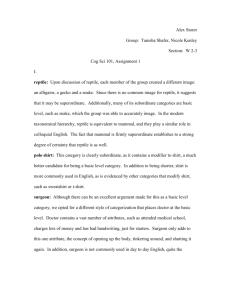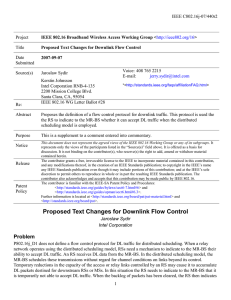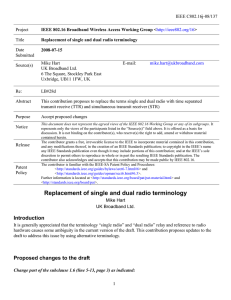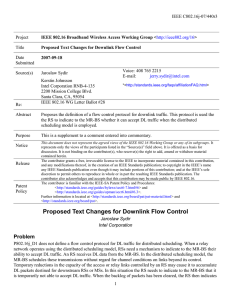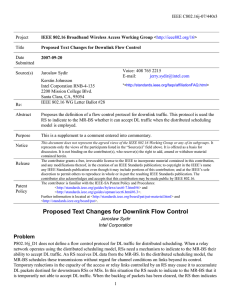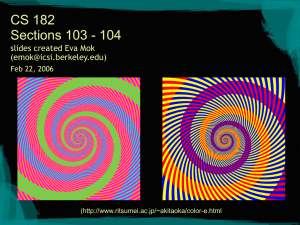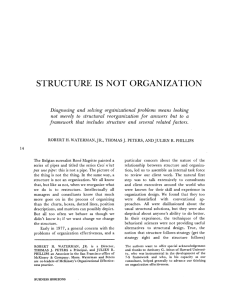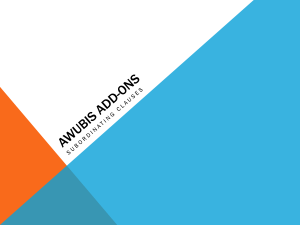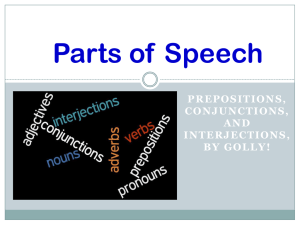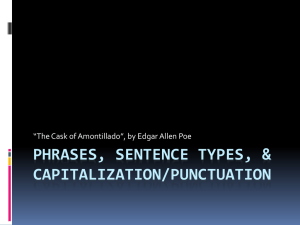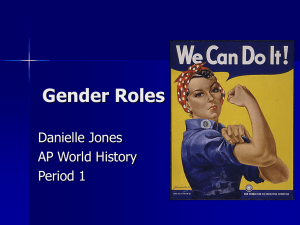Searching Through the Hierarchy: A Behavioral and
advertisement
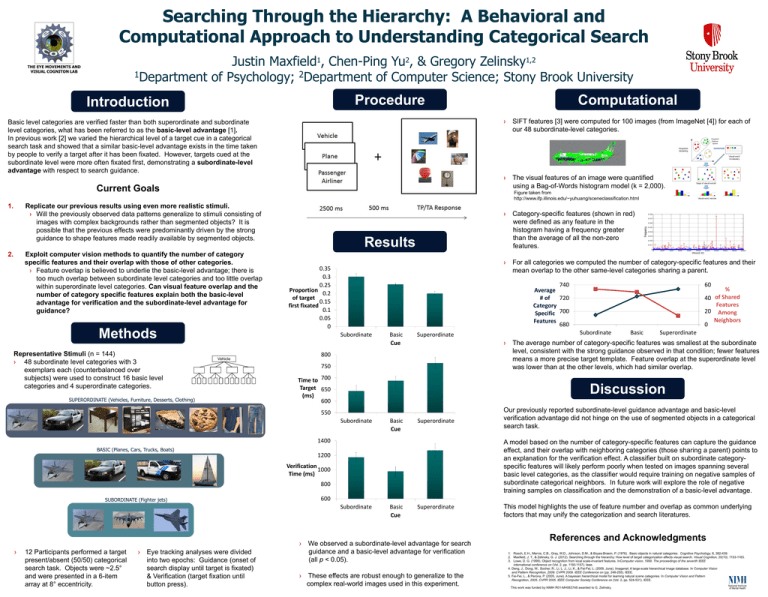
Searching Through the Hierarchy: A Behavioral and Computational Approach to Understanding Categorical Search Justin Maxfield , Chen-Ping Yu , & Gregory Zelinsky 1Department of Psychology; 2Department of Computer Science; Stony Brook University 1 THE EYE MOVEMENTS AND VISUAL COGNITON LAB 2 1,2 Procedure Introduction › SIFT features [3] were computed for 100 images (from ImageNet [4]) for each of our 48 subordinate-level categories. Basic level categories are verified faster than both superordinate and subordinate level categories, what has been referred to as the basic-level advantage [1]. In previous work [2] we varied the hierarchical level of a target cue in a categorical search task and showed that a similar basic-level advantage exists in the time taken by people to verify a target after it has been fixated. However, targets cued at the subordinate level were more often fixated first, demonstrating a subordinate-level advantage with respect to search guidance. › The visual features of an image were quantified using a Bag-of-Words histogram model (k = 2,000). Current Goals 1. Figure taken from http://www.ifp.illinois.edu/~yuhuang/sceneclassification.html Replicate our previous results using even more realistic stimuli. › Will the previously observed data patterns generalize to stimuli consisting of images with complex backgrounds rather than segmented objects? It is possible that the previous effects were predominantly driven by the strong guidance to shape features made readily available by segmented objects. 2. Exploit computer vision methods to quantify the number of category specific features and their overlap with those of other categories. › Feature overlap is believed to underlie the basic-level advantage; there is too much overlap between subordinate level categories and too little overlap within superordinate level categories. Can visual feature overlap and the number of category specific features explain both the basic-level advantage for verification and the subordinate-level advantage for guidance? Methods Representative Stimuli (n = 144) › 48 subordinate level categories with 3 exemplars each (counterbalanced over subjects) were used to construct 16 basic level categories and 4 superordinate categories. Vehicle › Category-specific features (shown in red) were defined as any feature in the histogram having a frequency greater than the average of all the non-zero features. Results › For all categories we computed the number of category-specific features and their mean overlap to the other same-level categories sharing a parent. 0.35 0.3 0.25 Proportion 0.2 of target 0.15 first fixated 0.1 0.05 0 740 Basic Cue Superordinate 800 750 Time to 700 Target 650 (ms) 600 Basic Cue Superordinate 1400 1200 800 Superordinate Our previously reported subordinate-level guidance advantage and basic-level verification advantage did not hinge on the use of segmented objects in a categorical search task. 600 Subordinate › Eye tracking analyses were divided into two epochs: Guidance (onset of search display until target is fixated) & Verification (target fixation until button press). Basic A model based on the number of category-specific features can capture the guidance effect, and their overlap with neighboring categories (those sharing a parent) points to an explanation for the verification effect. A classifier built on subordinate categoryspecific features will likely perform poorly when tested on images spanning several basic level categories, as the classifier would require training on negative samples of subordinate categorical neighbors. In future work will explore the role of negative training samples on classification and the demonstration of a basic-level advantage. Verification 1000 Time (ms) 12 Participants performed a target present/absent (50/50) categorical search task. Objects were ~2.5° and were presented in a 6-item array at 8° eccentricity. Subordinate Discussion Subordinate SUBORDINATE (Fighter jets) % 40 of Shared Features 20 Among Neighbors 0 › The average number of category-specific features was smallest at the subordinate level, consistent with the strong guidance observed in that condition; fewer features means a more precise target template. Feature overlap at the superordinate level was lower than at the other levels, which had similar overlap. 550 BASIC (Planes, Cars, Trucks, Boats) 60 Average # of 720 Category Specific 700 Features 680 Subordinate SUPERORDINATE (Vehicles, Furniture, Desserts, Clothing) › Computational Basic Cue Superordinate › We observed a subordinate-level advantage for search guidance and a basic-level advantage for verification (all p < 0.05). › These effects are robust enough to generalize to the complex real-world images used in this experiment. This model highlights the use of feature number and overlap as common underlying factors that may unify the categorization and search literatures. References and Acknowledgments 1. Rosch, E.H., Mervis, C.B., Gray, W.D., Johnson, D.M., & Boyes-Braem, P. (1976). Basic objects in natural categories. Cognitive Psychology, 8, 382-439. 2. Maxfield, J. T., & Zelinsky, G. J. (2012). Searching through the hierarchy: How level of target categorization affects visual search. Visual Cognition, 20(10), 1153-1163. 3. Lowe, D. G. (1999). Object recognition from local scale-invariant features. InComputer vision, 1999. The proceedings of the seventh IEEE international conference on (Vol. 2, pp. 1150-1157). Ieee. 4. Deng, J., Dong, W., Socher, R., Li, L. J., Li, K., & Fei-Fei, L. (2009, June). Imagenet: A large-scale hierarchical image database. In Computer Vision and Pattern Recognition, 2009. CVPR 2009. IEEE Conference on (pp. 248-255). IEEE. 5. Fei-Fei, L., & Perona, P. (2005, June). A bayesian hierarchical model for learning natural scene categories. In Computer Vision and Pattern Recognition, 2005. CVPR 2005. IEEE Computer Society Conference on (Vol. 2, pp. 524-531). IEEE. This work was funded by NIMH R01-MH063748 awarded to G. Zelinsky.

